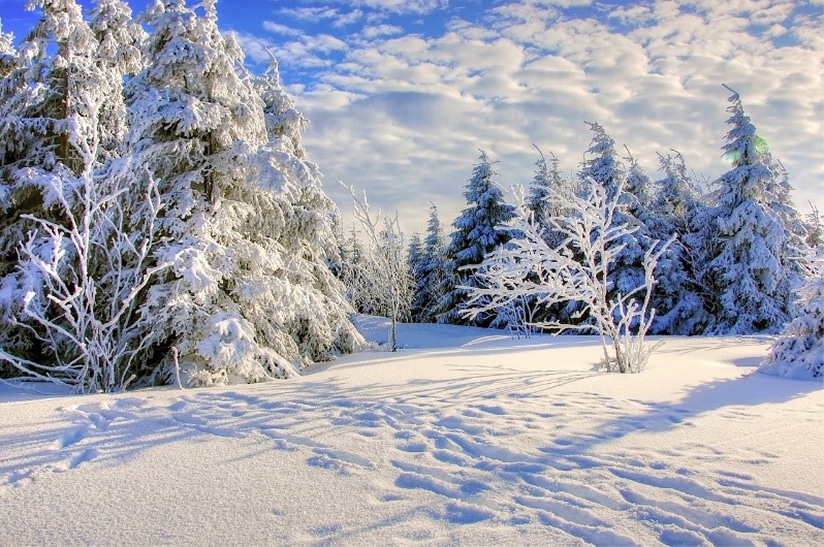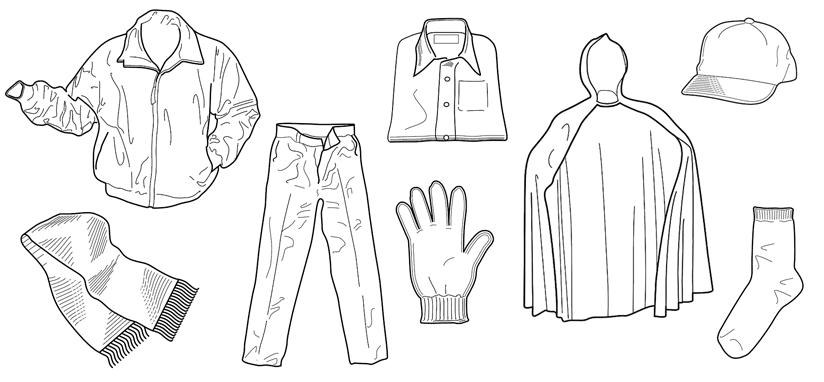How to Keep Hold of Your Best Tradesmen in the Winter
Nov 05, 2018
Staff retention is a tricky concept for most businesses, but when it comes to working in construction or on site, there are many factors at play that can disrupt the equilibrium. In this article, we are going to look particularly at winter, and how you, as an employer, can do your best to keep your best tradesmen happy and productive.
There are 7 areas in particular that we think are worth reviewing in your company to see if they encourage your best tradesmen to stick around in the winter months.
1. Are your tradesmen kept warm and safe?
A construction site of any kind can be a dangerous place, that’s why it’s important to do the basics well, like wearing hard hats and steel toe-capped boots year-round. However, when the winter comes along, there are new challenges to face. The threat of ice, hail, sleet, snow, heavy rains and reduced visibility can introduce new threats to the working environment.
Whilst you can’t change the weather, you can prepare your tradesmen well, ensuring they have enough layers to keep warm, are wearing waterproof clothing to keep dry, and have all of the best safety equipment to keep them from injury. As much as 30-50% of heat is lost through the head and feet, so be sure to take a look at our woolly hats, neck warmers, and thermal socks.
The best practice:
-
- Three loose-fitting layers provide more warmth than two bulky layers
- The base layer should be wool or polyester and not cotton
- The outer layer should be waterproof
- The middle layer should be thermal
- High-quality thermal gloves
- Thermal long johns and socks
- Thermal hat, balaclava, scarf, snood, or hard hat liner
- Winter boots with enough grip to counteract icy or slippery surfaces
- Thermos flasks with a hot and slightly sweet drink to keep workers warm
2. Pay well in winter
It’s not a case of paying more, or paying less, but rather paying consistently through the year. Most tradesmen know that when the winter comes, there are lots of workers available and fewer jobs to be had. Some tradesmen will reluctantly drop their prices, and some won’t. Some talent will even find other work for the winter if they don’t feel they can earn enough.
If you, as a business, can develop a reputation for paying fairly throughout the year, you’ll be in a great position to welcome back the best tradesmen, and also be known as a great company to work for when trying to bring in new high-quality tradesmen. Reputation really goes a long way in the construction industry and keeping tradesmen on your side is important.
3. Provide job security
Having a trade is a form of job security in itself, as it can’t be outsourced. Tradesmen pick their trades, often because they like that type of work, they enjoy the chance to use their skills and abilities, and they want to be compensated for it. To get the best out of your tradesmen in the winter and to keep their job satisfaction and sense of job security high, it’s important that they are given relevant jobs in the winter. It may mean that you have a smaller and more specialist team, but it should keep morale higher. The last thing a tradesman wants on a freezing cold snowy day in January is to be given a task that doesn’t relate to their skills or abilities. Another way to offer job security is to offer longer projects through the winter – a project that might take 2 months of summer could be stretched to 4 months of winter, but with shorter working days and a smaller team.
4. Work shorter or smarter days
The most obvious option for the winter, when there are only 8 or 9 hours of daylight, is to start and finish in a way that would maximise the amount of working time that can be fit legally into those light hours. However, this isn’t necessarily the best situation for a lot of tradesmen. Many of them would be happy to start at 5 or 6 in the morning, in the dark, work a good 8 hours, and then get home while it’s still light. How do you create a system that works for everyone?
When we say work ‘smarter days’, what we mean is, use the mixture of dark and light as the indicator of when to do indoor work and when to do outdoor work. If you have teams working indoors in the daytime, and outdoors in the darkness, you’re going about it wrong. With smarter communications between the project managers and the tradesmen, this can work well for everyone involved.
5. Provide high-quality lighting equipment
We admit point 4 was a little idealistic, it’s not so simple as to just go indoors or outdoors as the weather changes. Jobs don’t function like that. So, what can you do when it’s getting dark and you are under pressure to get a project finished? You invest in lighting. We say ‘invest’, but actually, professional construction lighting has become more and more affordable over recent years, especially since LED lighting was introduced.
Right now, we have some amazing offers for strukta readers and online customers on our lighting. Visit our supplier store by clicking this link to find out which lights are featured in our most recent promotion. Warning: massive discounts to be had.
6. Provide winter training
If the work dries up, or you simply can’t give enough work to all of your staff, it may put you in the very difficult position of having to let people go. In some cases, there are members of staff that you don’t want to lose, despite the difficult situation, and in that case, the winter could be a great time to send them off to training. There may be certain skills and certificates that they are interested in pursuing that they don’t have the chance to do during the year. You can contribute towards their training, or guarantee them some work for when they finish, this depends on your relationship with your teams.
7. Be ready to stop when the weather gets bad
Perhaps the simplest of all of these 7 tips is to get ready to give the order to call the tradesmen inside for some hot drinks, to get their clothes on radiators and to get the feeling back in their cheeks. If they’re working outdoors and it starts tipping it down, the first thought in their heads will be ‘how long until my next break so I can get out of the rain?’. If you want to keep morale high, you’ll know when to make the best calls. Sometimes an uplifted team is better than a productive team.
Conclusion
The best thing you can do with winter approaching is to start getting prepared, start making plans and strategies, and start stocking up on essential goods. Here at strukta, we are doing all we can to help and we’ve put together some excellent November offers for our website visitors!

